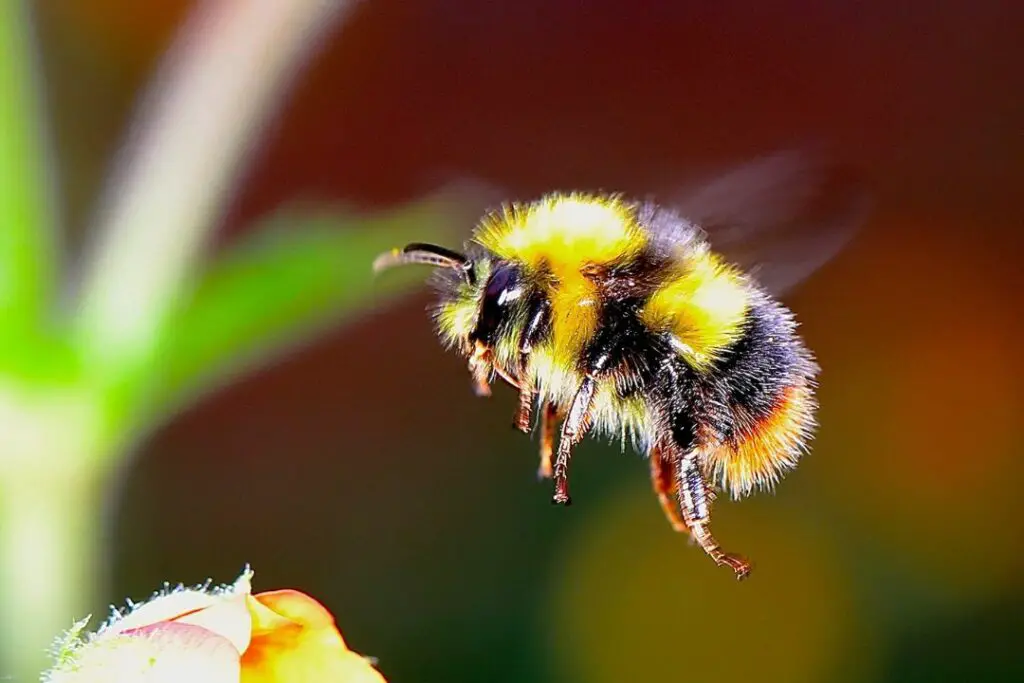Yes, bees have an exceptional sense of smell. They use their antennae’s many smell receptors to locate flowers, communicate through pheromones, and distinguish between hive members.
Bees can detect smells from far and wide, and it’s a critical part of how they survive and thrive in the world.
Let’s dive deeply into the undergrowth to find out exactly how bees use this incredible sense in their daily lives.
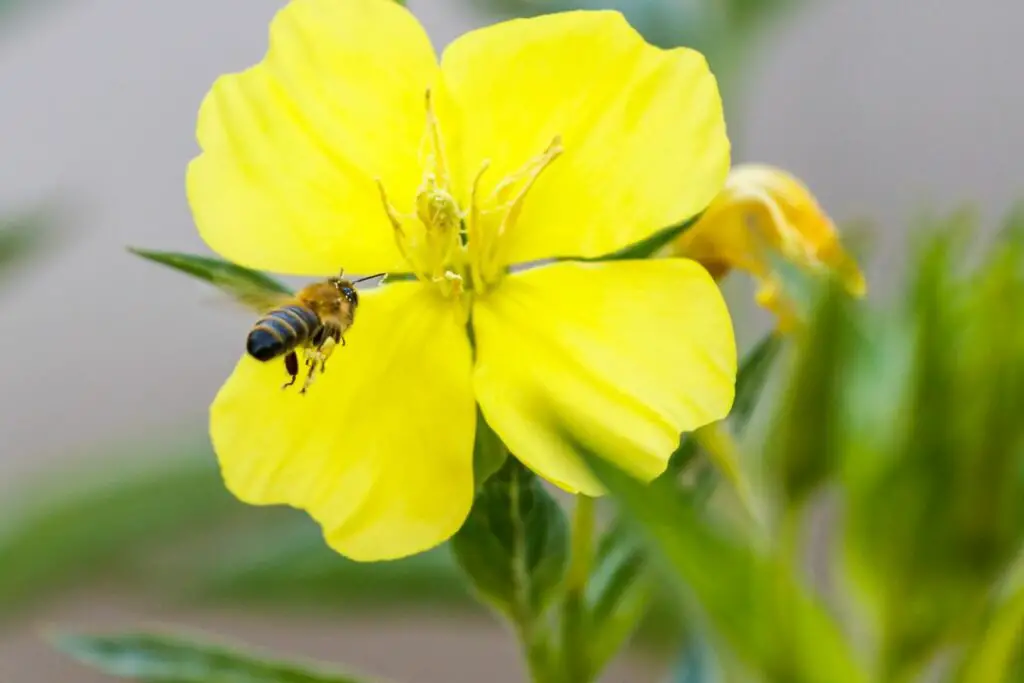
How Do Bees Use Smell To Communicate?
Bees can communicate seamlessly with movement and scent. While the famous “waggle dance” represents the direction and distance to a food source, it’s also accompanied by scents to reinforce the message.
Scent Glands: Honey bees have a special gland called the Nasonov gland near the base of their abdomen. When this social insect discovers a great source of nectar or a new nesting site, it releases pheromones from this gland to attract other bees to that location.
Dance Floor: In the darkness of the hive, the dancing bee will release specific scents, enabling other bees to see the dance and smell the quality and type of the nectar source. This aroma helps the observing bees get a “scented preview” of what they’ll find.
But it’s so much more than this. Bees use scents constantly for everything from kin recognition to finding nectar and pollen.
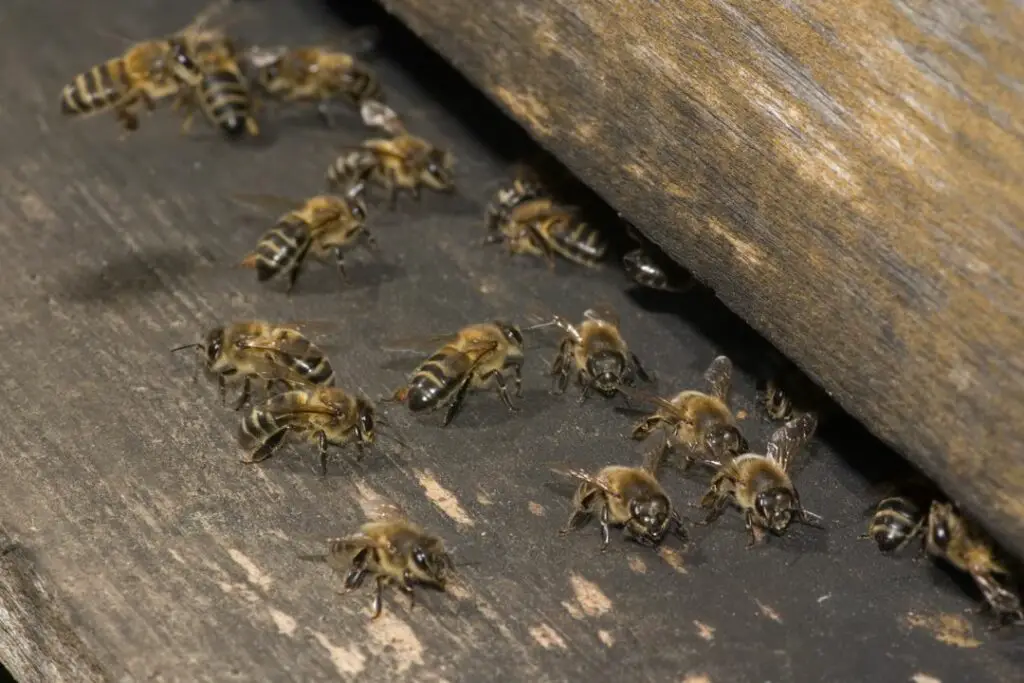
Why Is A Bee’s Sense Of Smell So Important?
Now we know how bees can use their sense of smell to detect chemical signals from other bees to forage, let’s look at how they use smell detection for protection.
Identifying another member of the same colony
Being able to identify friends from foes is crucial for bees. They can distinguish between hive mates and outsiders using their sense of smell.
Each hive has a unique scent fingerprint, ensuring that only members of that hive gain entry. Think of it as their secret handshake. Visitors who don’t smell as they should will be quickly attacked and dispatched by diligent guard bees.
Pheromones
Bees aren’t the chatty type. Instead of talking, they communicate through chemical signals known as pheromones.
- Queen’s presence: The queen bee releases pheromones to indicate her presence and vitality. It helps in maintaining harmony and order within the hive.
- Alarm signal: Why do bees swarm so quickly when they feel threatened? Worker bees release an alarm pheromone, signalling others to get defensive.
- Foraging information: Some bees release pheromones to guide others to a food source. It’s like dropping a pin on their bee-version of Google Maps!
Finding Nectar and Pollen
Flowers aren’t just pretty but also a bee’s primary food source. A bee’s keen sense of smell helps them locate flowers teeming with nectar and pollen.
They use their antennae, equipped with olfactory receptors, to detect these floral scents from a distance. Once they get the scent, they follow it, much like we’d follow the aroma of a freshly baked pie.
When you see bees buzzing above a flower bush, they’re probably having a good sniff to try and work out which flower will give them the best return in terms of flower and pollen.
Choosing Suitable Nesting Sites
Bees don’t settle for just any spot when setting up a home. They’re pretty picky. Using their sense of smell, they can determine the suitability of a potential nesting site.
Somewhere that smells of mould or other insects is probably not the best pick for our buzzing friends.
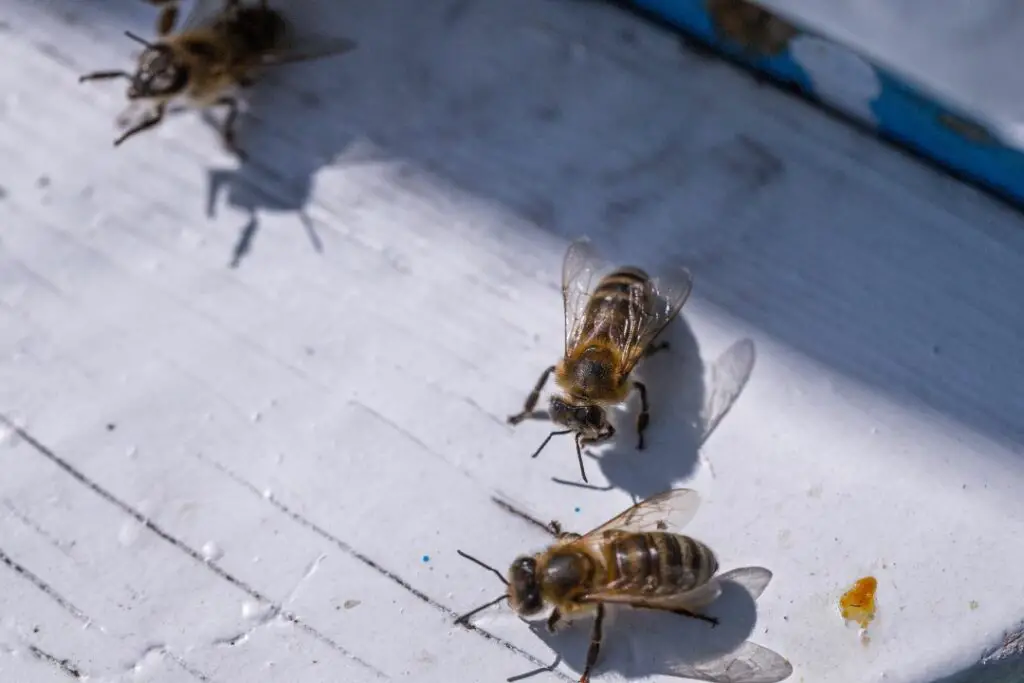
How Does It Work?
Within the small confines of a bee’s brain, there’s a remarkable system in place for interpreting different odours. Specific areas of their brain are dedicated to processing scent information, enabling bees to identify a whole array of scents, from floral fragrances to the unique scent of their hive.
I won’t get too stuck into the scientific side of things, but here’s a basic overview:
- Antennal Lobes: This is the initial processing centre for olfactory information.
- Mushroom Bodies: A critical region for integrating sensory information and forming memories.
- Central Complex: A pivotal area that assists bees in navigation, primarily when it’s based on memory associated with a scent.
Now, let’s explain how this all works.
The surface of bee antennae is studded with numerous odorant receptors (chemoreceptors). Each receptor is uniquely shaped to detect specific chemical compounds in odours.
When a molecule from an odour aligns perfectly with one of these receptors, it sends a signal to the bee’s brain. This fantastic system means bees can pick out many scents in their environment.
It’s a testament to their finely tuned olfactory system, ensuring their survival and success in locating food sources and communicating within their community.
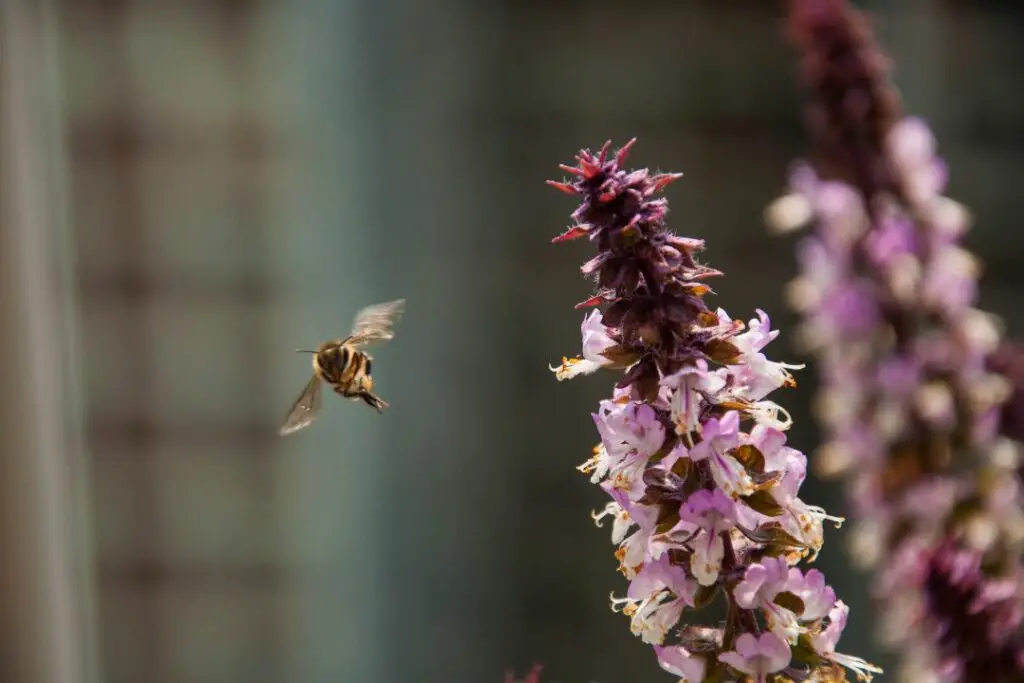
How Far Can Bees Smell?
Bees can smell flora from as far as 2km (1.2 miles) away with the right weather conditions.
Match this with bees’ incredible ability to fly incredibly long distances, given their size (up to 12km or 8 miles), and you can see how adept these excellent little pollinators are.
To give you a comparison, humans can smell up to a few metres away, with a dog being able to smell closer to 100 metres away. Bees can smell 20x as far, making them one of the planet’s most potent sniffers.
In Conclusion
Now we know how powerful a bee’s sense of smell is, it gives you a whole new appreciation for these genuinely amazing insects.
Looking for more insights into the world of bees? Learn more about the important pollinators that choose to make their homes in subterranean burrows in our read: Which bee lives in the ground?
Or pick from one of our other great articles below, covering every aspect of bees and their extraordinary lives.

